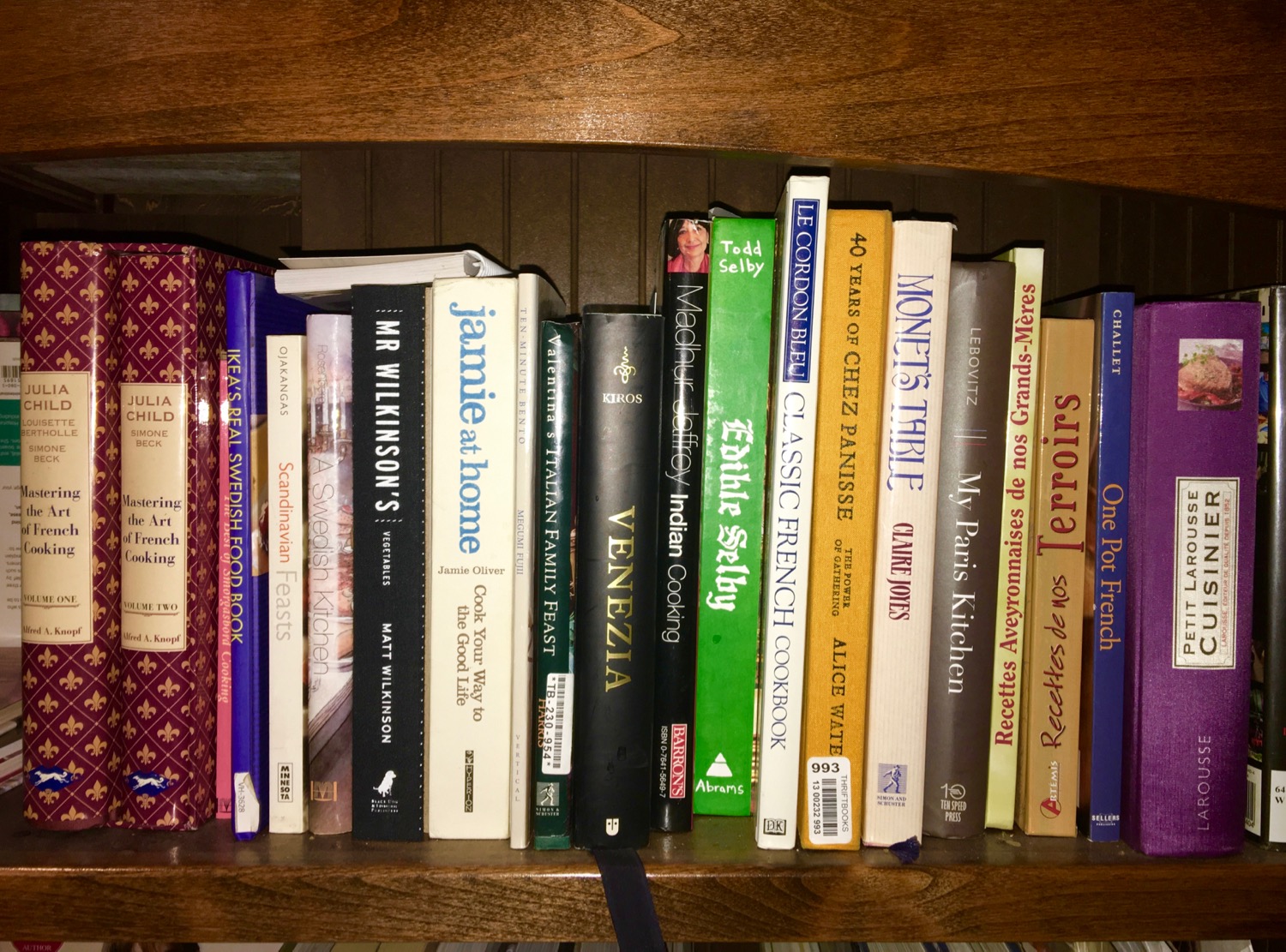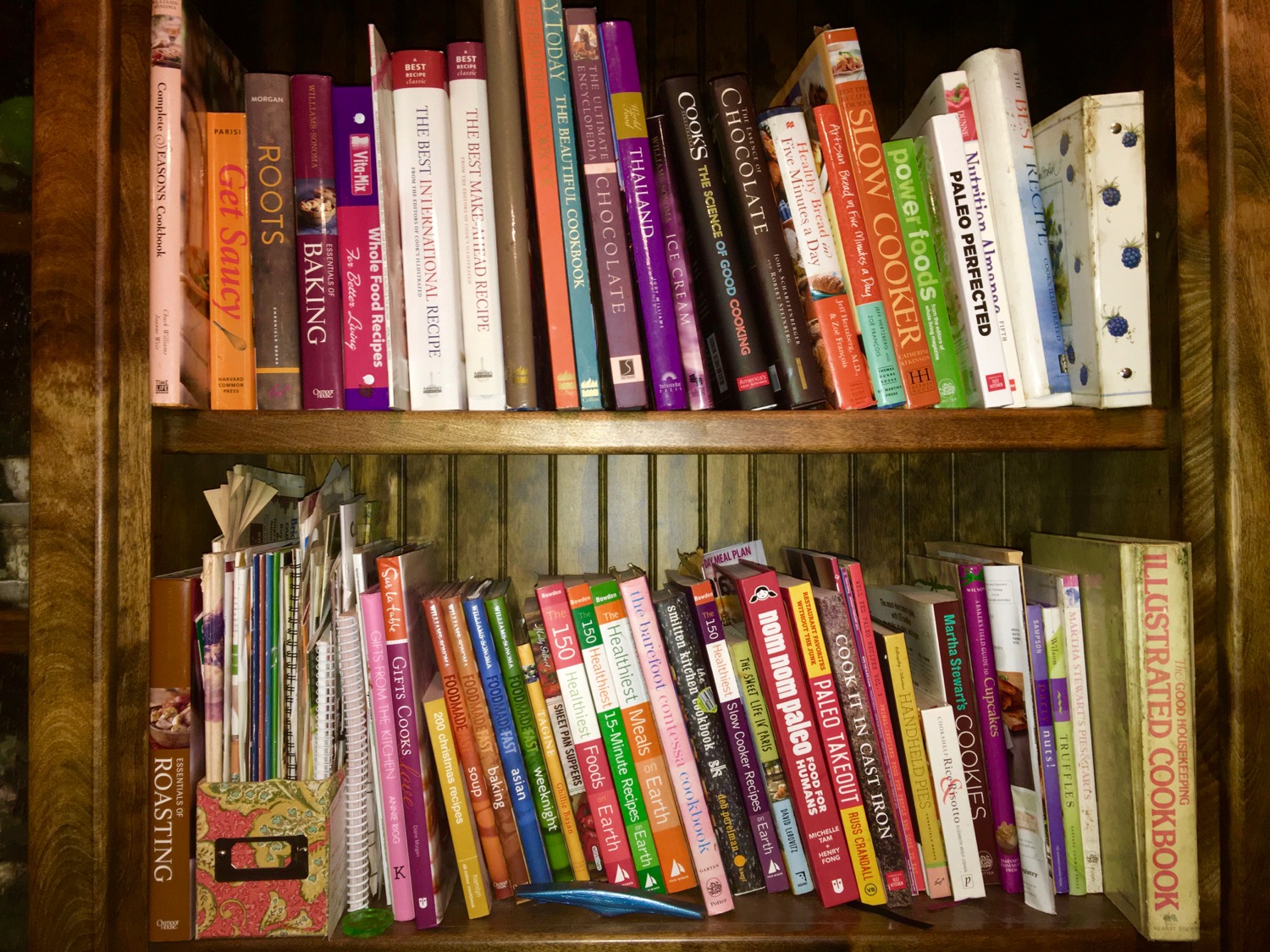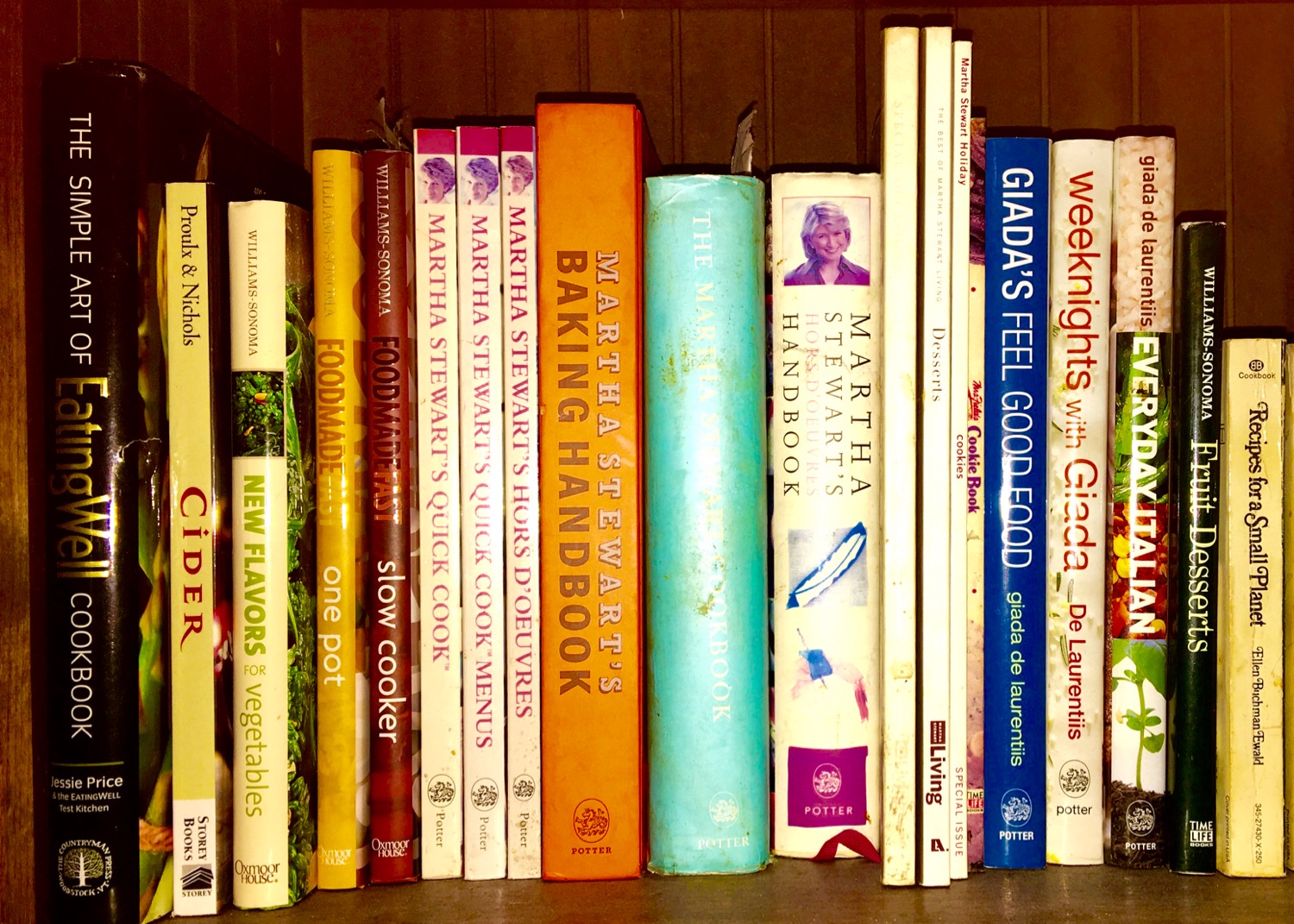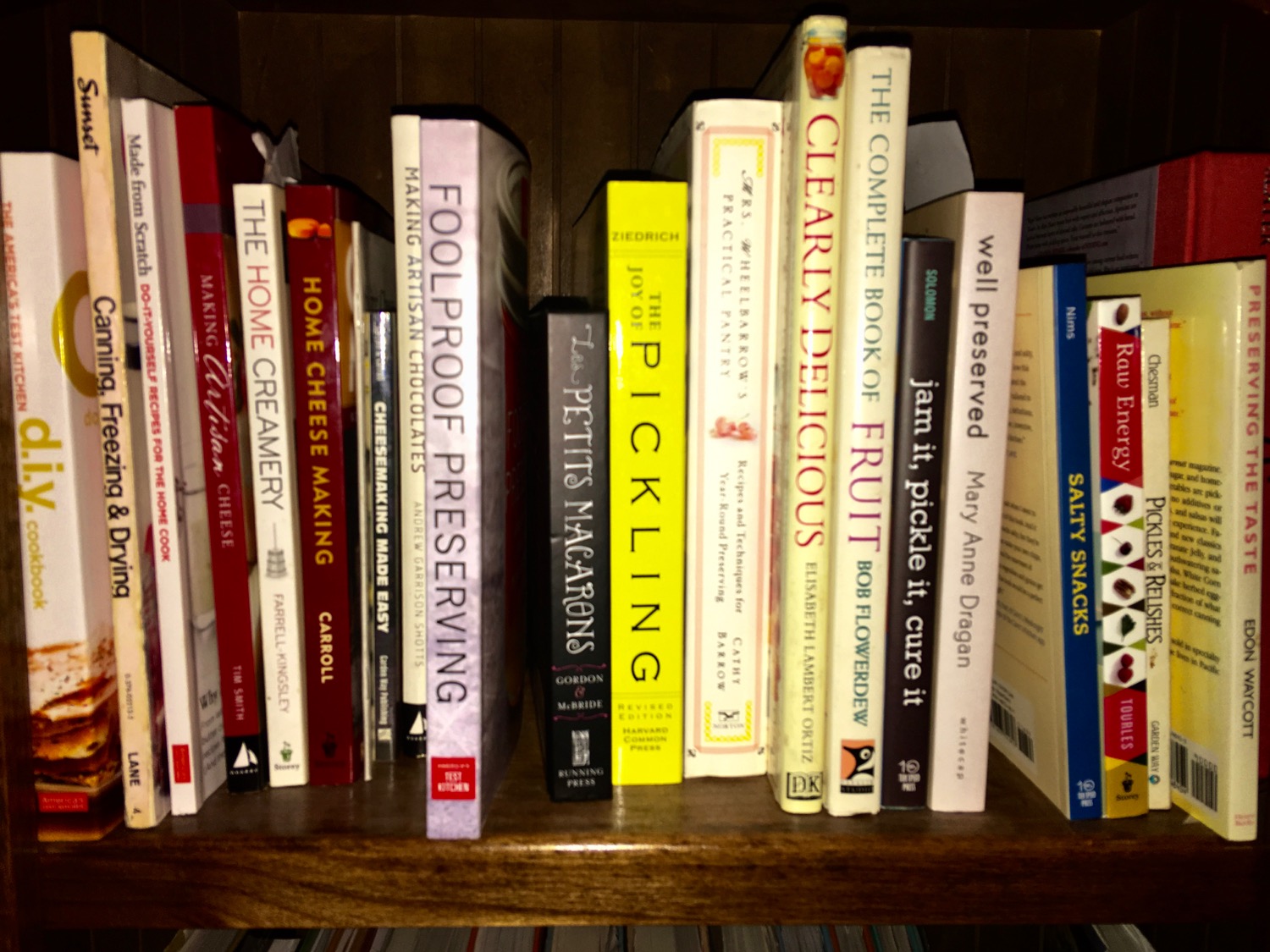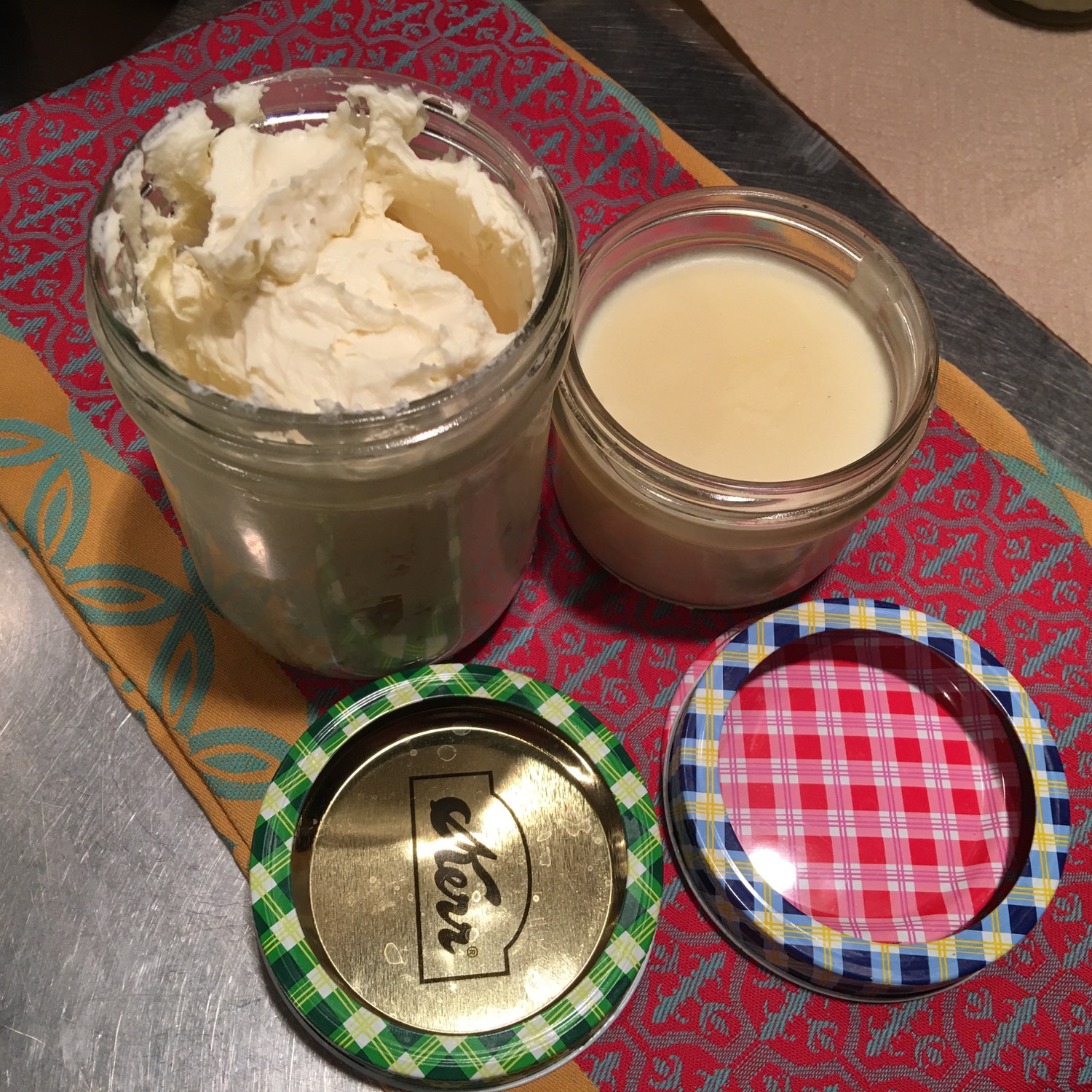Todays's post is the last in a series of 4 posts about cooking inspiration. It is about cookbooks. As I survey my wide ranging cookbook collection, I can see that they sort themselves into a few key categories:
Reference Material- These are books that encyclopedically categorize a small category of foods or ingredients, ie. The Spice Bible.
Do it Yourself Cookbooks- These are books which have recipes and methods for making that which we commonly think of as " store bought" stuff. These books often collect food preparing techniques which are in danger of being lost from the general population. How many of you know how to make crackers, cheese, pickles or ice cream ? i.e The Home Creamery by Farrell Kingsley.
Cookbook travel- These books explore a region dish by dish. They are often noteworthy for their fabulous photography. i.e. My Paris Kitchen by David Lebovitz
Health related cookbooks- These are focused on foods, dishes and menus which have health benefits. There are many such books claiming this feature, but not all actually have it. I have included a few which I think have genuine health benefits. i.e. The Autoimmune Paleo cookbook by Mickey Trescott, NTP.
Coffee Table Cookbooks- These books are typically large format, and magnificently photographed. They are sumptuous tomes which are meant to be works of art in and of themselves. Example: Culinaria, eds. Andre Domine, and Michael Ditter
Chef Based Cookbooks- These feature one famous chef who gives presents their unique recipes but also their versions of the classics, i.e. Mastering the Art of French Cooking, by Julia Childs.
Category Cookbooks- These are cookbooks which focus on a particular category of cooking, i.e. The Essentials of Roasting by Williams Sonoma.
Comprehensive Cookbooks- These are cookbooks which aspire to cover everything comprehensively, ie. The Best Recipe, by Cooks Illustrated.
Here are some homegrown photos of my cookbook shelves as they are tonight.
My personal favorites shift every few months. Right now, I am biased toward the health related cookbooks since I believe more and more that one can make healthy food delicious. We understand more than we ever have about food science and human nutrition, and many well educated and creative writers are producing excellent cookbooks by marrying this information with their skill and taste in cuisine.
I also believe that once you taste healthy food from well written recipes, that you will not be able to go back to ordinary unhealthy food.
With this in mind, I am going to plug one cookbook series and two particular books by different authors as my top choices at this time:
The Jonny Bowden series on The Healthiest Foods
Paleo Takeout by Ross Crandall
Nom Nom Paleo Food for Humans, by Michelle Tam and Henry Fong
I love all the online recipes and sites. But sometimes, the large glossy photos and thoughtful prose in a traditional paper cookbook is uniquely satisfying. Paper cookbooks also permit annotation. I can tell you all of mine are written in, with dates, who I made the recipe with, and any modifications I saw fit to make.
Take a walk on the culinary wild side, and read a good cookbook. Better food is pleasant step toward better health.



